To pull a decent shot of espresso given an adequately prepared basket, the remaining fundamentals are essentially a balancing act between water, heat, pressure and time. But what does it take to monitor each variable in real time, with the ability to fine tune any or all of them individually, for repeatable successful chorus-like profiles that yield consistently exceptional shots, even with the most challenging single-origins and blends? That is the question tackled by the Decent Espresso machine.
John Buckman, co-designer of the Decent Espresso machine that’s currently in production and on track for delivery in early 2017, is sensitive to his company’s position as a newcomer in an industry where reputation counts for a lot. Buckman is also the CEO of the company, which at this point also sells a variety of espresso accessories and tools such as a tamping cradle, digital milk thermometer, espresso scale, pressure-calibrated tamper and more.
Buckman is loath to make too many bold, loud claims about the capabilities of his machine or how it compares to other giants in the industry. Rather, he’s hoping that the sheer litany of advanced features, its performance in the demos he’s currently conducting on a West Coast tour, and that its co-designer is renowned coffee luminary Scott Rao will set the stage for swift adoption and embrace by the very demanding home and professional espressosphere.
The price helps, too. The basic model, which counts an intuitive touchscreen tablet interface and connectivity, pressure profiling, advanced steam-generating technology and the machine’s purportedly “rock solid” temperature stability among its long list of features, will retail for $999. That’s well below the typical price point of a high-end home or prosumer espresso option, and within striking distance of the consumer middle-ground. Meanwhile the “plus” model at $1,999 swells the feature list to include flow profiling, temperature profiling, steam profiling, the ability to automatically detect the end of the preinfusion, and more.
Preinfusion detection and true temperature and flow profiling and monitoring at the coffee bed are only a few of the capabilities offered by the Decent machine that the company says have never before been available on any other espresso machine ever, at any price. Meanwhile other arrows the company claims are in its quiver have to this point only been the stuff of far pricier, highest-end machines, such as a 3-bar blast of dry, endless steam from its insulated wand on a moment’s notice. Its steam-generating technology is akin to that of the Slayer Steam machine, which was itself a breakthrough that launched only about five months ago by one of the kingpins of professional espresso equipment.
“What we’re doing is a new musical instrument, and baristas are the musicians,” Buckman told Daily Coffee News of the machine, which grants unprecedented tweakability to so many variables, and provides so much data to reflect upon, the end result of it all has actually yet to be determined. Though the goal is, of course, better espresso.
While the inner workings and algorithms at play under the hood of the Decent machine are too complex for full explanation here, much of its magic is fostered by hardware that includes two pumps, two thermocoil heaters, two sensors embedded in the “ceiling” of the brew chamber over the bed of ground coffee, and a whole lot of mind-bending digital computation.
Of those two sensors, one detects temperature, the other is an electronic pressure gauge. Data from the group pressure sensor in combination with readings from a flow meter at the pump are what allow the machine to interpret when preinfusion has maxed out.
For near-instantaneous accuracy and stability of water temperature, a boiler of sorts keeps water at 150F at all times, and both the machine’s two pumps draw water from it. One pump sends water through regular piping that leaves the water at 150F, the other feeds a thermocoil that rapidly heats water to 210F. These two sources combine at the grouphead to balance each other out into exactly the desired temperature, within about 1F degree, confirmed by the group temperature sensor.
This system also comes into play in compensating for the natural drop in temperature that a relatively cool bed of grounds always causes in virtually all other espresso machines to this point. Although if the goal is to mimic the temperature and pressure profiles of other classic electronic or manual-lever machines, a menu of presets in the Decent tablet software comes preprogrammed to do that, too.
The intense steam power, preceded only by Slayer on the professional scene and totally unprecedented on the home front, is achieved by the second thermocoil, which runs at 330F. “This is very energetic steam,” said Buckman.
The Decent’s espresso capabilities, according to Buckman, approach the level of what’s achieved on professional equipment that runs even pricier. “We’ve gone next to a Black Eagle and a Synesso and pulled similar shots, but it’s too early to tell, for me, whether we really can replicate those machines,” said Buckman. “They’re impressive pieces of technology. I don’t want to claim that we can do everything they can, I admire those machines too much.”
Apart from its technological breakthroughs, the Decent offers a material appeal as well. Users need never interact with anything plastic; the Portafilter handle is made of wood, and both its drip tray and its reservoir are hearty cast ceramic. It operates impressively quietly, and occupies an equivalent footprint to any other kitchen countertop machine.
Meanwhile the DE1+Pro model boasts beefed-up hardware, a plumb-in option, higher wattage for faster steam and additional internal fans for greater longevity of its electronics, raising the specs to what Buckman contends is true commercial capability and fortitude. “It’s happiest one shot after another,” said Buckman of the Pro model. “A café is going to buy four of these, so they have a 4-group machine. They’d be looking at somewhere like $11,000 for a 4-group machine, and if one were to break they’d have three groups running.”
As espresso gestalt though it may be, skeptics will inevitably point out that the Decent Espresso’s dependence on such complicated innards and an external tablet to boot is inevitably a sort of technological house of cards, with many more potential points of failure than simpler, albeit less groundbreaking machines. “It’s absolutely true. Basically it’s going to need to be time-tested,” Buckman self-assuredly conceded.
That time-testing publicly begins on the first of February, 2017, at which time the initial run of finished production units begins shipping. Buckman reported that since preorders for the Decent Espresso machine opened November 6 they’ve received about 110 orders. “We’re selling about five per day,” said Buckman, who is currently touring the West Coast performing demos with a beta unit. Scott Rao will join him for the upcoming southern California leg of the tour, after which Buckman will travel to the UK, and then back for more US demo touring into the new year. Demo event information is available at the company’s website.
Howard Bryman
Howard Bryman is the associate editor of Daily Coffee News by Roast Magazine. He is based in Portland, Oregon.



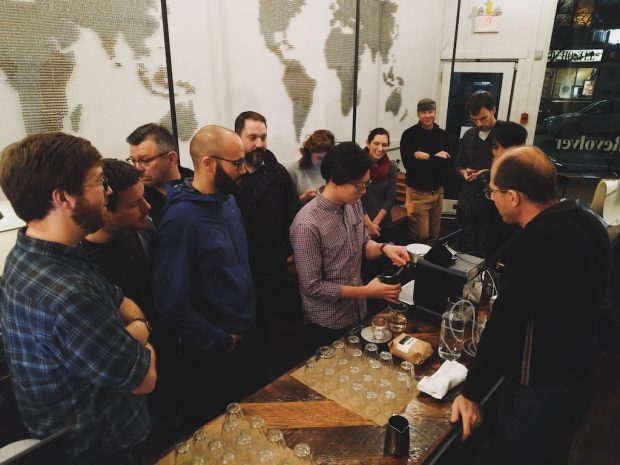
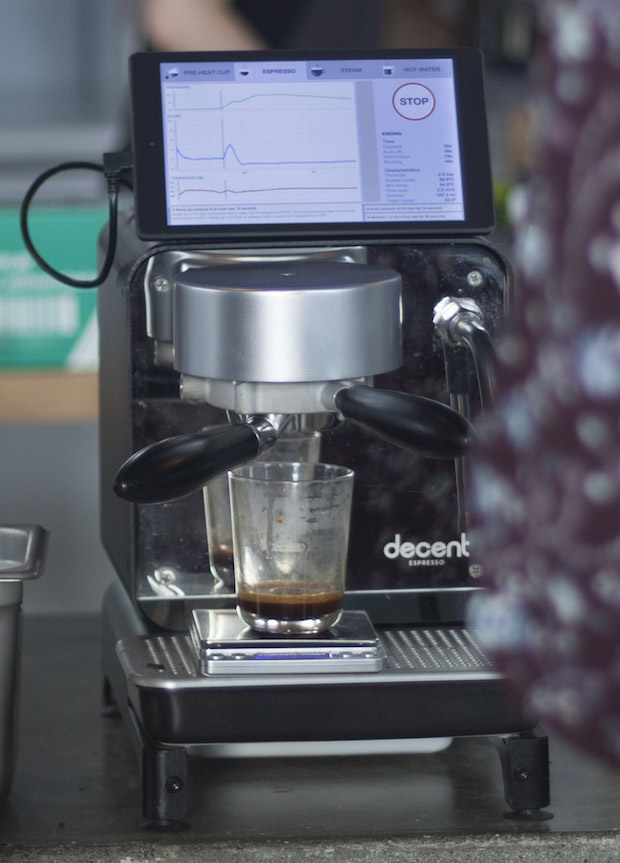
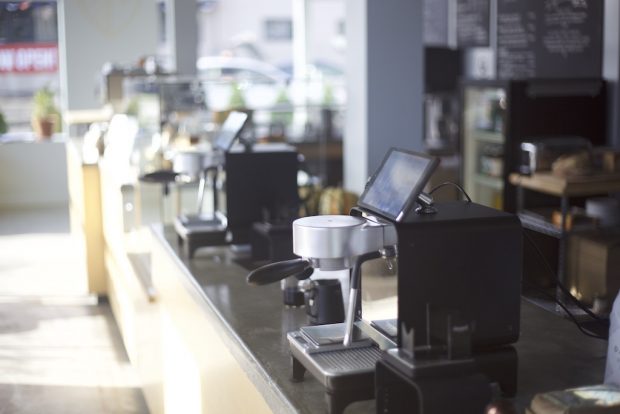
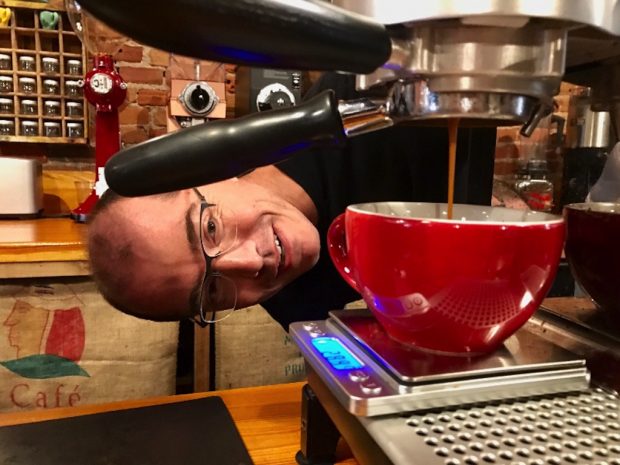

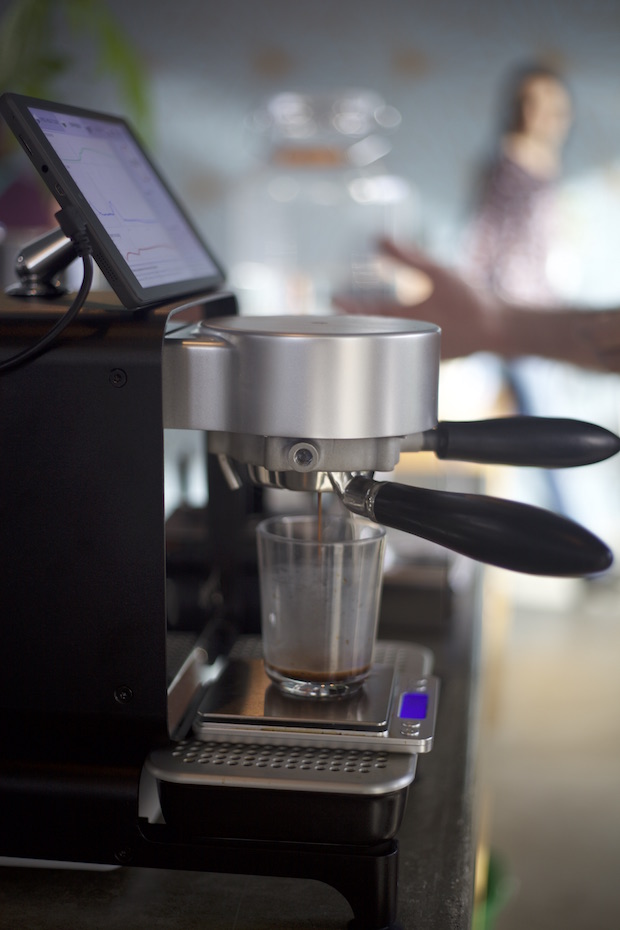
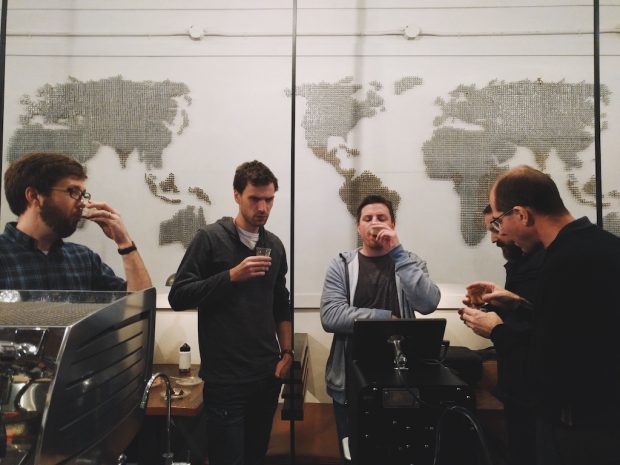



Comment